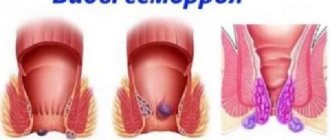- Why does snot run down the back of the throat?
- Symptoms of postnasal drip
- Complications of the syndrome
- How to remove nighttime mucus drainage
- Treatment of snot in the throat of a child
- Treatment of snot in the throat in an adult
When snot runs down the back of your throat, the condition is called postnasal drip or postnasal drip syndrome. Why does this condition occur and what are the complications?
Normally, a small amount of mucus is constantly present in the nasopharynx, which is produced by the exocrine glands. The mucus mixes with saliva and moves further into the digestive tract. Mucus is necessary to moisturize and cleanse the nasal cavity and nasopharynx from foreign substances that enter the respiratory tract with air. This process is absolutely physiological and does not cause any inconvenience. Discomfort occurs when the amount of mucus increases and its viscosity changes. Postnasal drip syndrome is a pathological condition and requires attention from a specialist.
Why does snot run down the back of the throat?
The pathology accompanies a number of ENT diseases. Possible reasons why snot runs down the back of the throat are:
- proliferation of adenoids;
- congenital anomalies of the structure of the mucous membrane of the posterior wall of the nasopharynx;
- deviated nasal septum;
- rhinosinusitis of various etiologies accounts for more than 50% of identified clinical cases;
- entry of a foreign body into the nasal cavity.
Women may experience the appearance of snot in the throat during pregnancy. A similar situation arises for people who work in hazardous industries or live in regions with poor ecology, or smokers. Chemical fumes, tobacco smoke, and particles of household chemicals entering the respiratory tract lead to irritation of the mucous membrane, so mucus production increases and snot flows into the throat.
The problem of leakage appears when taking certain medications. In particular, such a situation may be associated with the uncontrolled use of vasoconstrictor nasal drops. While the patient is using these medications, postnasal drip of mucus is observed. After discontinuation of the drug, mucus production normalizes and unpleasant symptoms disappear.
Some people experience snot running down their throats when the temperature and humidity change. When the microclimate is normalized, the human condition improves.
In some cases, the appearance of postnasal drip in adults and children is in no way associated with ENT diseases. The cause is pathology of the digestive organs, which is accompanied by gastroesophageal reflux. The contents of the stomach are regularly thrown into the esophagus, which causes belching, sore throat, and irritation of the mucous membrane. For this reason, mucus production increases and postnasal drip appears.
In some patients, this symptom is accompanied by endocrine pathologies leading to hormonal imbalance.
1.General information
It would seem that any person who has had a runny nose at least once is familiar with this uncomfortable sensation: somewhere in the depths of the nasopharynx, something has accumulated and interferes with every swallow, and it is necessary to get rid of it urgently, by any means... Considering that a runny nose is the most common from painful human conditions, we can safely assume: this feeling of “internal runny nose” is known to everyone, and it is known so well that there seems to be nothing to talk about here. In the end, the mucous membranes of the nasopharynx normally produce large volumes of secretion, some of which flows down the back wall, is swallowed with saliva and food, sometimes accumulates - for example, after a night's sleep - but, in general, does not create any special problems.
However, the flow of moisturizing and bactericidal mucus along the posterior nasopharyngeal wall into the laryngopharynx is not always “normal” and problem-free. It's all about the causes of hypersecretion, the composition and properties of mucus, and its quantity.
Rhinitis (runny nose) and accompanying rhinorrhea (profuse discharge of mucous discharge from the nasal passages) is, by and large, not a disease. This is a symptom, a sign of a particular pathology. Sometimes this symptom is quite expected and really does not have any particular clinical significance, but in some cases it requires special attention and examination. For such cases, a special term has been introduced, which is found in the literature in several synonymous spellings: postnasal drip syndrome (English: “postnasal drip syndrom”), retronasal drip (sometimes written “drip”), retronasal discharge, internal runny nose, postnasal syndrome. It was first described at the end of the 18th century under the name “chronic pharyngeal catarrh.”
A must read! Help with treatment and hospitalization!
How to remove nighttime mucus drainage
During the daytime, the clinical manifestations of the disease are less pronounced, since the body is in an upright position. The person simply swallows the bulk of the discharge. At night, when the body is in the “lying” position, mucus flows to the reflexogenic areas of the laryngopharynx. This irritates them and leads to severe coughing. For this reason, nighttime mucus discharge causes serious discomfort and interferes with normal rest.
To get rid of the problem, you need to identify its cause by contacting a specialist. The doctor may prescribe rinsing the nasal cavity, irrigating the nose with a spray with silver ions, or steam inhalation. You should also keep your sleeping area humid and drink plenty of fluids to help relieve postnasal drip at night.
Sialor against runny nose
- Eliminates inflammation and congestion
- Fights bacteria without disturbing microflora
- Does not contain hormones or antibiotics
Find out more
There are contraindications. Consult a specialist.
Folk recipes
Treatment with folk remedies, as well as traditional therapy, is based on the type of disease. Thus, in case of infectious diseases, the patient should drink a large amount of warm liquid, which promotes the discharge of mucus along the far wall of the larynx. Drinking plenty of warm water has a calming effect and helps remove toxins from the body.
The patient should undergo irrigation and lubrication of the throat, rinsing of the nasal sinuses, and inhalation. For rinsing, the solution is prepared at home and includes chamomile, sage, eucalyptus leaves, taken a tablespoon of each ingredient per 0.5 liter of liquid. The future solution is boiled over low heat for 25 minutes; you can also prepare it in a thermos, but this will take two to three hours. The finished solution is filtered and lemon juice and honey are added to it, the procedure is carried out in the morning, at lunch and in the evening three times a day.
To remove mucus, the patient may be prescribed inhalations. To prepare a liquid for inhalation, you should make a strong decoction of thyme and add soda to it. A good remedy is boiled and mashed potatoes in their skins, to which soda is added. A mixture prepared from finely chopped aloe leaves with honey, which you will need one tablespoon per good aloe leaf, will help relieve inflammation and reduce the formation of mucus. Consume twice a day after meals.
A powder made from dry calendula petals and mixed with honey can remove accumulated mucus. The finished product is used between meals. Another unconventional recipe that has gained popularity for removing mucus is an infusion based on licorice root and plantain leaves. To prepare the infusion, you will need a liter of boiling water and two tablespoons of finely chopped product. Drink 200 ml per day in the morning, lunch and evening.
Alternative medicine includes many recipes that help cope with illness and alleviate the patient's condition. One of these recipes is considered to be a mixture based on grated onions and honey. Drink the prepared mixture in the morning, at lunch and in the evening, one spoonful at a time. An alcohol tincture of propolis, crushed into powder, is taken at 30 g of raw material per hundred grams of alcohol and left to infuse for 7 days.
Treatment of snot in the throat of a child
If postnasal drip occurs in a child, a consultation with an ENT doctor is required. The specialist assesses the condition of the upper respiratory tract, collects information about recent diseases, congenital or acquired anomalies of the upper respiratory system. Hardware diagnostic procedures include: rhinoscopy, mesopharyngoscopy, radiography or CT. This allows you to identify the cause that triggered the flow of mucus into the throat and determine how to treat postnasal drip. When identifying an inflammatory process, it is important to determine its cause. A general blood test helps with this. In bacterial infections, leukocytosis with increased ESR is observed. Viral infections lead to neutropenia and lymphocytosis. Allergic reactions are promoted by eosinophilia.
In most cases, the pathology can be eliminated with conservative therapy. If the cause is rhinitis or sinusitis, it is important to determine the nature of the rhinitis. For bacterial infections, antibiotics are indicated. If the inflammatory process is caused by a virus or allergen, symptomatic treatment is used. If snot runs down the back of the throat, antihistamines and corticosteroids may also be used for treatment. They help relieve swelling of the mucous membrane and thereby relieve symptoms.
For severe coughs, antitussive drugs are prescribed: expectorants and other drugs.
3. Symptoms and diagnosis
In addition to the interfering sensation described above, a feeling of congestion and an increased swallowing (and sometimes gag) reflex designed to “clear the throat,” retronasal drip is one of the causes of chronic cough, since excess amounts of mucus, flowing into the laryngopharynx, mechanically irritate the cough receptors. Often there is also pain in the tonsils and/or pharynx, a “lump in the throat” due to reflex swelling, and in more severe cases – dysphonia, hoarseness, and symptoms of salpingootitis.
As a rule, with an upright position of the body, the symptoms are significantly alleviated, and when lying down, especially for a long time, they worsen.
Diagnostics includes the study of complaints and medical history, a detailed examination of the ENT organs, as well as, as necessary, the use of additional research methods (endoscopic, tomographic, laboratory, etc.). In some cases, consultation with specialized specialists is necessary, for example, an allergist, an infectious disease specialist, etc.
Differential diagnosis is carried out with chronic bronchitis and other clinically similar conditions.
About our clinic Chistye Prudy metro station Medintercom page!
Treatment of snot in the throat in an adult
Postnasal drip syndrome affects people of all ages. To find out how to get rid of snot in the throat, an adult patient also needs to consult an ENT doctor. The specialist will prescribe a set of examinations to identify the cause of the pathology and appropriate treatment.
What to do if the snot in the throat does not go away after taking medications? This situation may be caused by incorrectly selected therapy or structural abnormalities of the intranasal structures and paranasal sinuses. In this case, the doctor may choose a different conservative therapy regimen or recommend surgical treatment.
Patients with a deviated nasal septum undergo septoplasty. This is an endoscopic operation that is aimed at eliminating deformation of the nasal septum without changing the shape of the external nose. Thanks to this procedure, nasal breathing is restored and one of the main causes of rhinitis and sinusitis, which provoke postnasal drip, is eliminated.
If there are indications, the patient may undergo surgery to resect concha bullosa or remove a Thornwaldt cyst, a cyst-like formation in the nasopharynx. It causes postnasal drip, which is difficult to respond to conservative therapy. After the operation, the patient's condition usually returns to normal.
Without an examination, it is impossible to say how to treat snot in the throat, so this situation requires mandatory attention from specialists.
Symptoms
When mucous masses constantly “stand” in the throat, the patient wants to swallow them. Such actions (if the secretion is too thick) can cause vomiting and nausea. This condition usually occurs in parallel with other characteristic signs that patients complain about when visiting an ENT doctor:
- sore throat;
- a feeling of a lump in the throat that cannot be gotten rid of;
- a constant desire to cough, although the cough does not bring relief; coughing attacks are especially severe at night;
- discomfort when swallowing food;
- bad breath caused by pathogens multiplying in the throat;
- swollen lymph nodes;
- Loud snoring.
To understand how to treat a sore throat, you need to consult an ENT doctor to determine the cause of postnasal drip.
Safe products for treating children
The child's body is most susceptible to medications that have a number of side effects that negatively affect other organs of the baby. Therefore, doctors recommend resorting to more gentle methods of treatment and offer the following medicines and folk recipes: “Alteyka”, banana puree, honey with radish juice, licorice syrup, compresses from mashed boiled potatoes along with oil and iodine, which are wrapped in foil and placed on breast. In addition to the above, a compress made from cabbage leaves smeared with honey is very effective. Children should include liquid mashed potatoes, warm decoctions, compotes and fruit drinks in their diet.








